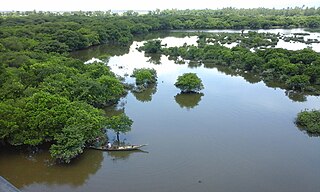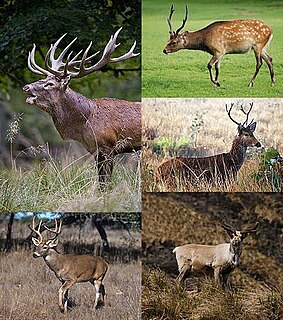
The Lake George State Forest is a designated protected area and state forest in the U.S. state of Florida. The 21,176-acre (8,570 ha) forest is located in northwestern Volusia County, Florida, near Lake George and the communities of Pierson, Barberville, and Volusia. It is overseen by the Florida Forest Service within the Florida Department of Agriculture and Consumer Services.

Chilton Woods State Forest is a 397-acre (161 ha) state forest located on the Northern Neck in Lancaster County, Virginia, near the town of Warsaw.

Briery Creek Wildlife Management Area is a 3,164-acre (12.80 km2) Wildlife Management Area in Prince Edward County, Virginia. With terrain typical of Virginia's south-central Piedmont, it encompasses the 845-acre (3.42 km2) Briery Creek Lake, a reservoir formed by the damming of Briery Creek and Little Briery Creek. Much of the area was historically used for tobacco farming, and more recently, timber production; today the land contains a mixture of hardwoods and loblolly pine.

Burches Run Wildlife Management Area, formerly Burches Run Lake WMA, is located on 55 acres (22 ha) near Wheeling in Marshall County, West Virginia. Until 2005 the wildlife management area contained a lake impounded by a dam at risk of failure. The name change occurred after the dam was removed. The terrain climbs gently above Burches Run and is covered by a mature oak-hickory second-growth forest.

Cecil H. Underwood Wildlife Management Area is located on 2,215 acres (896 ha) near in Marshall and Wetzel counties near Cameron, West Virginia. The rugged, steep terrain varies in elevation from about 800 feet along the banks of the West Virginia Fork of Fish Creek to over 1500 feet. The steep slopes are covered with mixed hardwoods and forest clearings fields. The WMA is located about 10 miles south of Cameron on Rice Ridge Road off U. S. Route 250, along the border of Marshall and Wetzel counties.

Alexander State Forest is located in Rapides Parish, Louisiana near the town of Woodworth. It was established in 1923 as a state demonstration forest. It contains the Indian Creek Recreation Area and the Alexander State Forest Headquarters Building, constructed in 1935, is on the National Register of Historic Places.
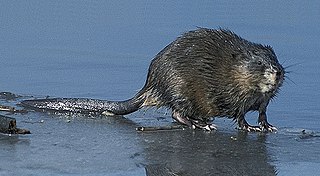
Chief Cornstalk Wildlife Management Area is located on 11,772 acres (4,764 ha) in Mason County near Southside, West Virginia. Second growth oak-hickory and mixed hardwoods forests cover much of the rolling and moderately steep slopes. Chief Cornstalk WMA can be reached either on Nine Mile Creek Road off US 35 near Southside, or by Crab Creek Road from State Route 2, south of Gallipolis Ferry.

Cross Creek Wildlife Management Area is located on 630 acres (250 ha) in Brooke County near Wellsburg, West Virginia. Mixed hardwoods cover most of the former strip mine site. The rolling terrain is punctuated with a few highwalls and ponds. Cross Creek WMA can be reached by State Route 7 about 6 miles (9.7 km) northeast of Wellsburg.

Green Bottom Wildlife Management Area is located on former plantation lands of U.S. Congressman and Confederate General Albert G. Jenkins. The 1,096 acres (444 ha) in Cabell County and Mason County are located along the banks of the Ohio River about 16 miles (26 km) north of Huntington, West Virginia. The Green Bottom WMA land is a mixture of farmland, mixed hardwood forest, wetlands, and open water. The Jenkins Plantation Museum is located on Corps of Engineers land adjacent to the WMA. The museum is located in the original 1835 Green Bottom Plantation House, and is operated by the West Virginia Division of Culture and History.
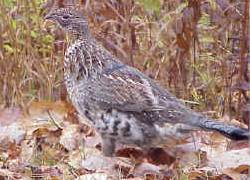
Hilbert Wildlife Management Area is located in Lincoln County near Sod, West Virginia, less than forty-five minutes drive south of Charleston, the state capital. Located on 289 acres (117 ha), the WMA land is steep and heavily covered with second growth hickory-oak hardwood forest.

Horse Creek Wildlife Management Area is located in Wyoming County near Pineville, West Virginia. Located on 47.9 acres (19.4 ha) that includes a small lake, the open fields of the WMA are bordered by steep hardwood forest.
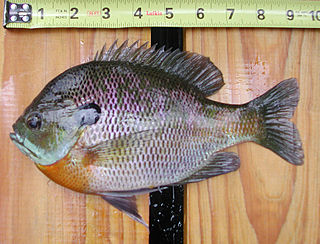
Hughes River Wildlife Management Area is located in Wirt County and Ritchie County near Parkersburg, West Virginia. Located on 10,000 acres (4,000 ha) that border both the Little Kanawha River and the Hughes River. The WMA terrain varies from river bottom to steep hillsides covered with second growth oak-hickory hardwood stands and younger pine-hardwood woodlots.

Sleepy Creek Wildlife Management Area is located in Morgan and Berkeley Counties in West Virginia's Eastern Panhandle. It encompasses 22,928 acres (92.79 km2), mostly covered with mixed oak and pine forest, although about 3,500 acres (14 km2) are covered with mixed hardwoods. The 205-acre (83 ha) Sleepy Creek Lake is located entirely within the WMA.

Stumptown Wildlife Management Area is located in both Calhoun and Gilmer Counties near the community of Stumptown, West Virginia. Stumptown WMA is located on 1,675 acres (678 ha) of hilly terrain, mostly covered with mixed oak and pine forest, with stands of mixed hardwoods.

Tug Fork Wildlife Management Area (WMA) is located about 10 miles northwest of Welch, West Virginia in McDowell County. Tug Fork WMA is located on 2,165 acres (876 ha) of steep terrain along hills above the Tug Fork River. The WMA is heavily forested, primarily with mixed hardwoods and yellow poplar/black cherry forests in the coves. The WMA is accessed from U.S. Route 52 at Premier. Several tracks and jeep trails provide walking access into the Tug Fork WMA from U.S. Route 52.
Charlie Elliot Wildlife Center is a nature preserve located near Mansfield, Georgia, United States. Named after Charles Newton Elliott (1906–2000), the nature preserve has 6,400 acres (26 km2) of forests, lakes, and fields, which are managed by Georgia Department of Natural Resources. The Wildlife Center includes Marben Public Fishing area, the Charlie Elliott Conference Center and Banquet Hall, Visitors' Center and Museum, and Clybel Wildlife Management Area.

Big Woods State Forest is a 2,188-acre (8.85 km2) state forest in Sussex County, Virginia. It was the first state forest property to be established in southeast Virginia.

Red Creek Wildlife Management Area was established from land owned by the U.S. Forest Service and is located within the De Soto National Forest off Mississippi Highway 15. Red Creek WMA lies within Stone, George, and Jackson Counties, southeast of Wiggins, Mississippi, and contains approximately 23,000 acres (93 km2).

James Ross Wildlife Reservation is a South Carolina Wildlife Management Area located near York and Sharon managed by the South Carolina Department of Natural Resources.

Big Woods Wildlife Management Area is a 4,173-acre (16.89 km2) Wildlife Management Area (WMA) in Sussex County, Virginia. It comprises two tracts of land; the 2,208-acre (8.94 km2) main tract, located immediately adjacent Big Woods State Forest, and the 1,965-acre (7.95 km2) Parker's Branch tract, located nearby.


